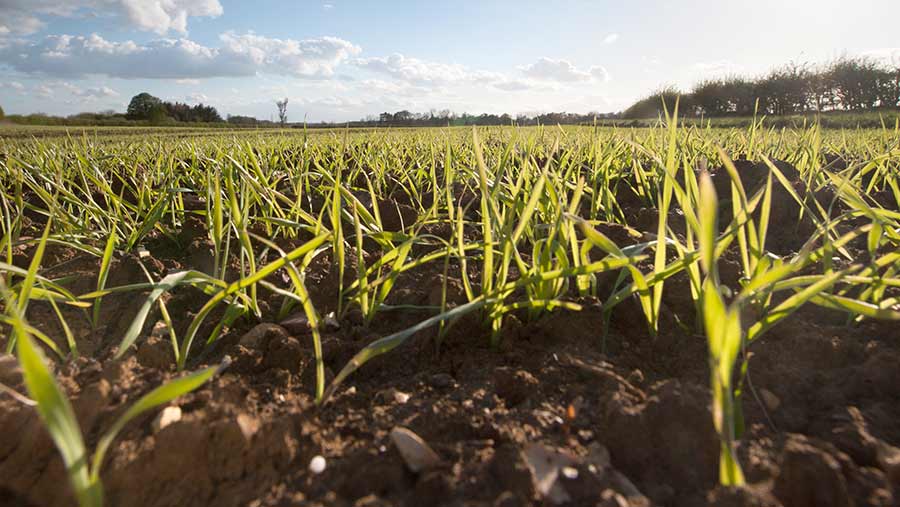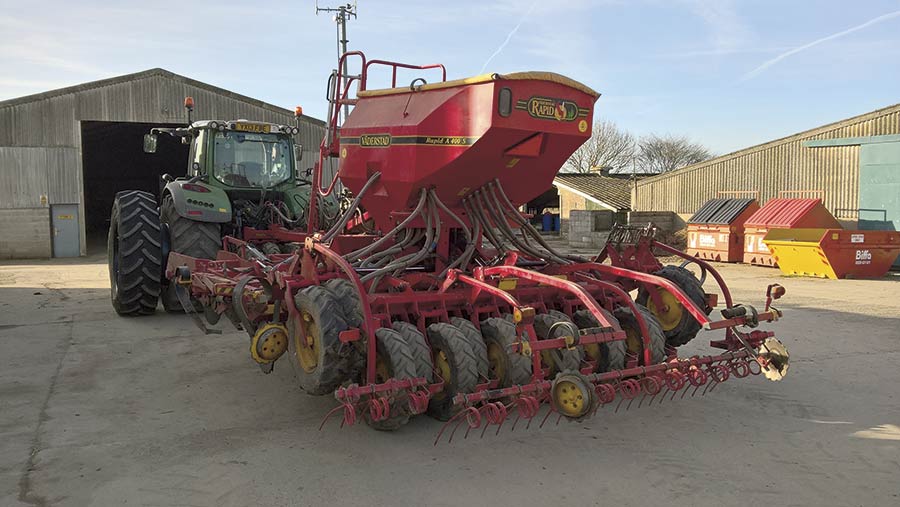How to achieve success with malting barley on heavy land
Swapping winter barley for spring malting barley has improved yields and slashed costs, as well as providing better grassweed control for one grower near the mouth of the Humber.
Much of the country’s malting barley cropping area is split between the lighter parts of East Anglia and circling the Scottish distilleries.

Jonathon Hodgson
So Jonathon Hodgson’s decision to grow the crop on the medium and heavy clay land east of Hull presents an additional challenge.
However, there are no immediate plans to switch to something lower risk as the malting crop is supplying the farm’s brewery.
This high biomass also helps to keep a lid on blackgrass, and provides good-quality straw for the farm’s bed and breakfast pig enterprise.
See also: Dow launches cereal herbicide with wide spray window
Good management is crucial to keeping grain nitrogen levels below malting contract requirements, to access the valuable premium over feed barley prices.
Mr Hodgson currently gets approaching 8t/ha, with nitrogen levels close to, but not generally above the current maximum spec of 1.6%.

© Tim Scrivener
Malting barley is normally grown on light land, with a poor soil nitrogen supply, so that the amount taken up into the ear can be carefully regulated.
Growing on heavy land with a better supply requires high yields so that the additional nitrogen gets diluted across the bigger crop yield.
Should you grow spring malting barley on heavy land?
Advantages
- Likely to yield well
- Competitive tillers can help blackgrass control
- Earns a premium
- Often cheaper to grow than winter cropping
Disadvantages
- Higher risk of going over grain nitrogen threshold and losing premium
- Higher risk of compaction on heavy land in a wet spring
- Can increase other grassweeds, for example wild oats
- Can clash with wheat harvesting
The switch was made five years ago after a winter wheat crop failed following a heavy slug infestation at Great Newsome Farm.
The farms consists of a 280ha block of land less than five miles from the East Yorkshire coastline.
Odyssey spring malting barley was then planted as an experiment, with an eye to helping the marketing of the beer produced by the Great Newsome Brewery.
The brewery is a successful farm diversification run by Mr Hodgson’s brother, Matthew.
It yielded above expectations and fell within malting spec, and has since been a reliable part of the rotation.
40ha of the crop forms part of the one-third of the farm put down to spring cropping, alongside vining peas and potato land rented out to a specialist grower.
Establishment critical to success
Despite heavy land often being more challenging to get on to in early spring, Mr Hodgson says there can be no compromise in the quality of establishment.
Getting the crop going strongly from day one is critical to its success.
“People have forgotten how it’s done around here [on heavy land],” he explains, saying that preparation for the spring crop begins as soon as possible after the previous crop has been harvested.
He advises getting the spade out to check for soil compaction, and if there is a problem, use a flat lift. He then autumn ploughs in dry conditions, and presses the furrows before leaving the ground to weather until spring.
With blackgrass described as “a big problem in patches”, an application of glyphosate is made to burn off any overwinter weed emergence, but there is no soil movement ahead of going on with the Vaderstad Rapid A drill.
Not over-cultivating the soil is essential for conserving moisture, says Mr Hodgson. He strives to hit the balance between staying off the land until compaction is not a risk, while still drilling into sufficient moisture to kick-start seed growth.
While having sufficient moisture won’t often be the problem in East Yorkshire, he highlights last season as an example of when there were only a few days between the showers when conditions were right to go.
This narrow optimum drilling window means being well prepared, and he makes sure preparations like fitting dual wheels and drill calibration are done in good time.
Cheap to grow
Since the crop was introduced, Odyssey has made way for maltsters’ favourite Concerto. Variable seed rate technology was introduced alongside variable rates of P and K to complement routine applications of pig muck and slurry.

Matthew Hodgson
This has led to more even crop stand, says Mr Hodgson, with indices of P+K now at an average of 2 across the farm, alongside an organic matter average of 4.2%.
Just 100kg of nitrogen is applied in a 50:50 split between the seed-bed and post-emergence, with the only other fertiliser input being a dose of manganese, copper and sulphur trace elements.
Fungicide applications are limited to a robust T1 and T2, using a mix of Swift (trifloxystrobin) and Helix (prothioconazole + spiroxamine), with both applied as a protectant, to keep yield potential as high as possible.
Blackgrass strategy
Mr Hodgson credits the competitive crop with helping to keep a lid on blackgrass numbers. This highlights again the importance of strong early establishment to cover over any bare patches of soil as rapidly as possible.
The persistent troublemaker is still the number one grassweed problem on the farm, with a comprehensive cultural control strategy introduced to combat it after chemical control became less effective.

© Andrew Meredith
This involves rotational ploughing to bury seed followed by direct drilling in subsequent seasons to keep seeds buried. Other measures include later drilling dates and increased spring cropping to give more stale seed-bed opportunities.
While the barley straw is highly valued as good-quality straw for the pigs, only the minimum amount required is baled to avoid carting seeds around unnecessarily, with the rest chopped and incorporated.
Increasing wild oat problem
However, an unintended consequence of more cultural controls and less herbicide use is an increasing amount of wild oats being seen, which are difficult to control.
He says declining use of Atlantis (iodosulfuron + mesosulfuron) for blackgrass control can partly explain this, as while it is getting less effective for blackgrass control, it still offers robust control of other weeds.
Treating wild oats at a pre-emergence stage is also ruled out due to the weed growing at the same time as the crop, and the limited amount of chemistry available for control that doesn’t also impact the crop.
He currently uses Axial (pinoxaden), but Avadex granules (tri-allate) will also being trialled this year.
The other problem that will be familiar to growers of spring cereals is ergot, which can be problematic, as there is no way of knowing if a crop is infested with it until it’s harvested.
Mr Hodgson advises that it is yet another reason to keep on top of grassweeds, as they host the troublesome disease between crops, acting as a green bridge.
Harvest tips
Getting the crop dry enough to harvest can be a problem near the coast, with a damp atmosphere brought about by regular sea frets, which make harvesting at the required 14.5% moisture content difficult.
Mr Hodgson says that while brackling is not a problem with Concerto, once the crop is ripe he prioritises harvesting the premium product over the farms 150ha of soft Group 4 biscuit winter wheat when there’s a harvesting clash.
He recommends having an area where the crop can be dumped quickly in the dry during tight harvesting windows to help keep the combine rolling. It can then be returned to later for further drying and cleaning as necessary.

